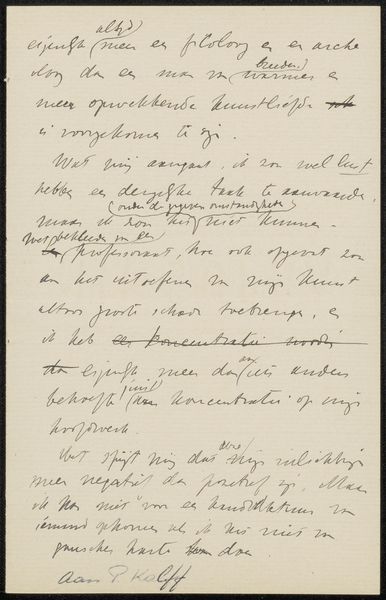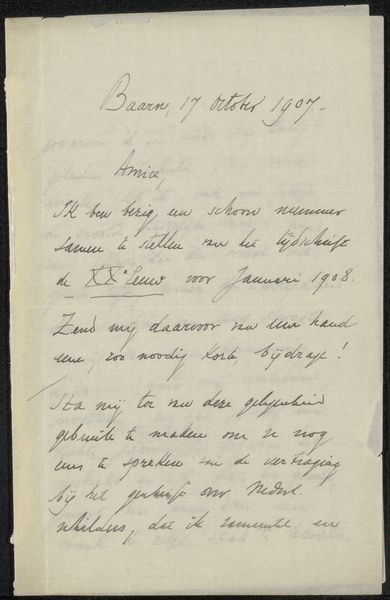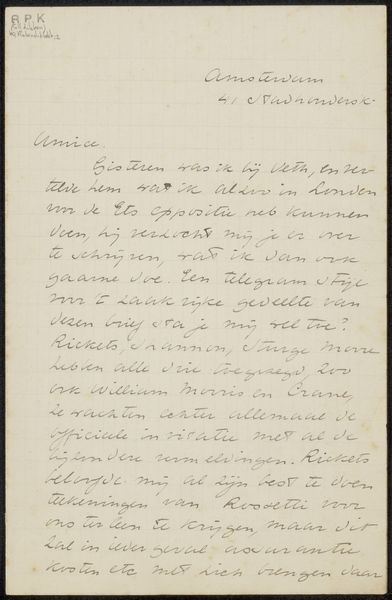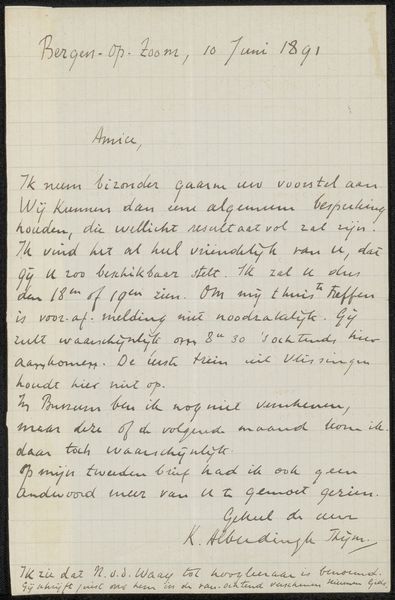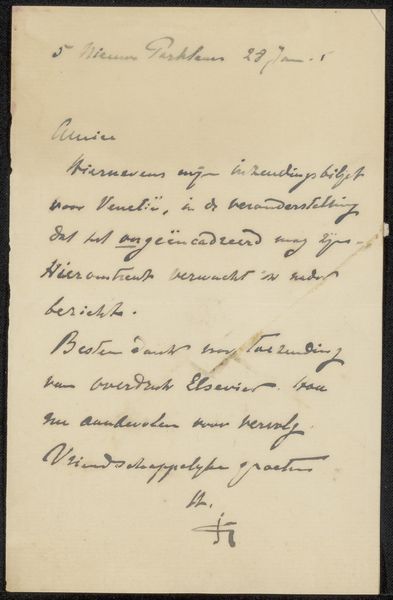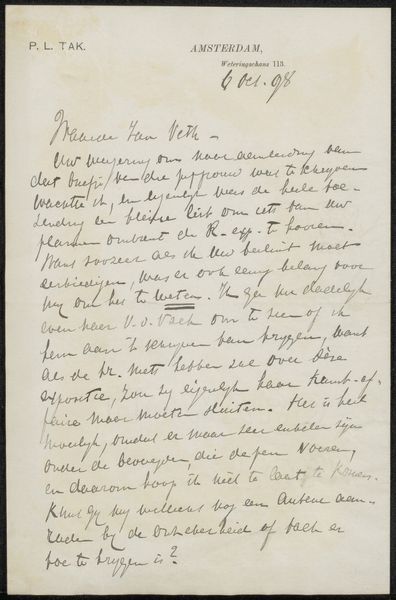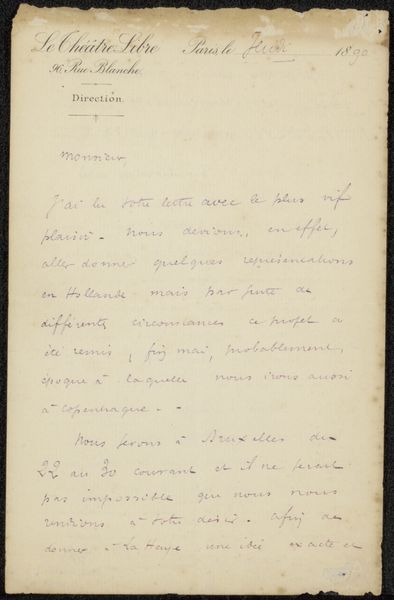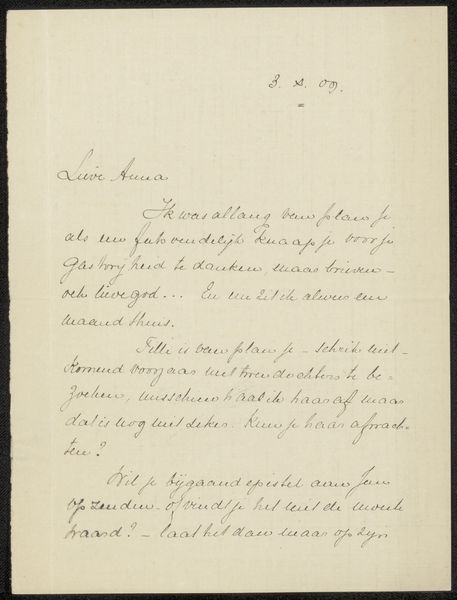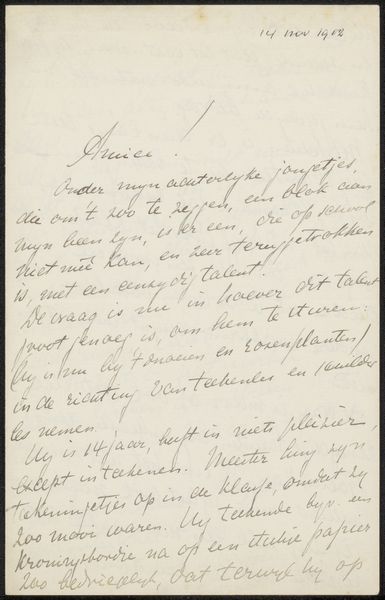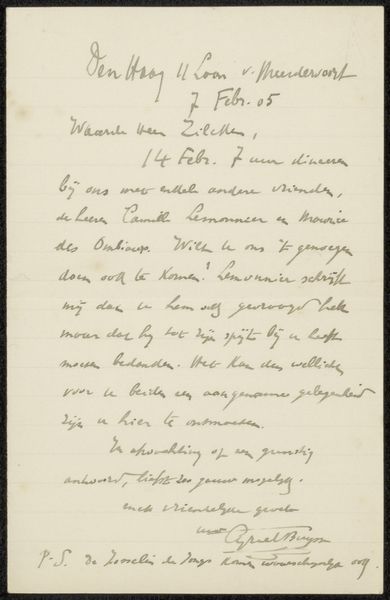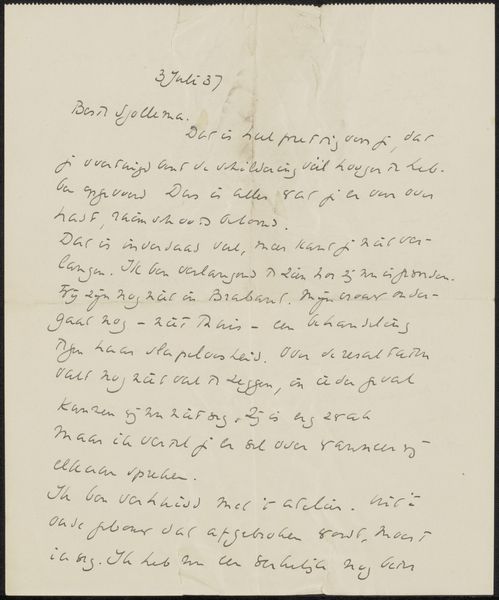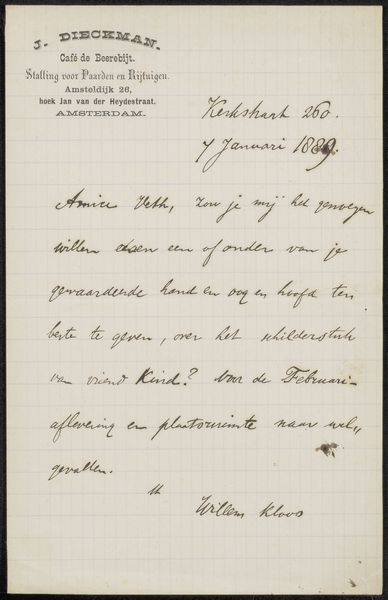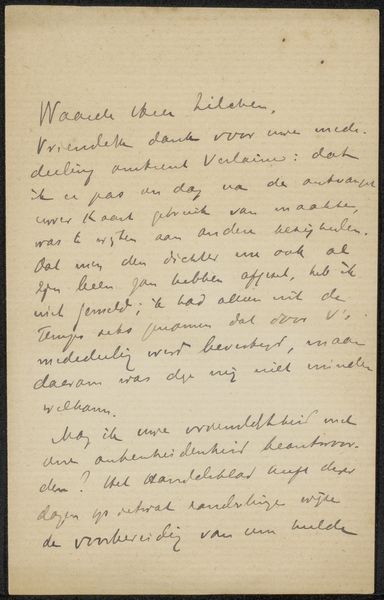
drawing, paper, ink, pen
#
drawing
#
paper
#
ink
#
intimism
#
pen
Copyright: Rijks Museum: Open Domain
Editor: So, here we have Karel Johan Lodewijk Alberdingk Thijm's "Brief aan Jan Veth," likely created between 1891 and 1894, rendered in pen and ink on paper. There’s an intimate quality to a handwritten letter. What strikes you most about this artifact? Curator: Well, consider the materiality itself. This isn't just information transfer; it's an intimate record of labour. The paper, likely mass-produced, contrasts with the personal act of handwriting. Look at the pressure of the pen strokes, the way the ink sits on the page. We can glean insight into the very process of Thijm's thinking. What questions arise for you when you think about the material circumstances of this letter's production? Editor: I guess I never thought about the *how* so much as the *what*. Does the availability of paper and ink during that period play a role in understanding its value or reception? Curator: Absolutely. Paper, even then, represented a level of access and privilege. Who could afford to write at length? Who controlled the means of disseminating ideas? This letter, potentially requesting payment rates from a newspaper, points to a direct link between artistic output and the capitalist structures of the time. The very content speaks to economic realities shaping the artistic landscape. It transcends the aesthetic. Do you think Thijm would consider his activity 'work'? Or even Art? Editor: That’s fascinating. So, analyzing it through a materialist lens unveils this letter as more than just a personal message, but almost a commentary on the art world's economics? Curator: Precisely. We shift the focus from artistic genius to the means of artistic production. Examining this letter illuminates the labor, the material conditions, and the inherent economic systems that shaped Thijm’s world and ultimately his art. Editor: That’s a completely different way of considering art! I appreciate gaining that insight! Curator: And I'm glad to see that you understand this material evidence and the work implicated here, can move beyond authorship and a simple reading to wider historical factors in which an artist such as Thijm can make work, thanks for sharing these insightful observations with me today!
Comments
No comments
Be the first to comment and join the conversation on the ultimate creative platform.
